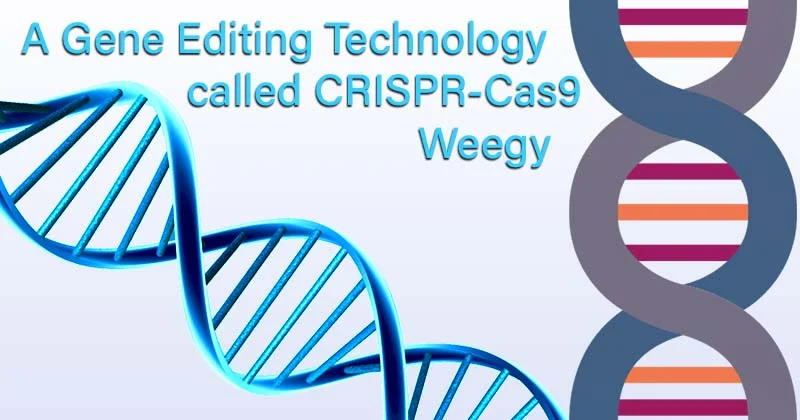A Gene Editing Technology called Crispr-Cas9 Weegy
In the field of genetics, the emergence of CRISPR-Cas9 technology has been nothing short of revolutionary. This gene editing technology, an acronym for “Clustered Regularly Interspaced Short Palindromic Repeats” and CRISPR-Associated protein 9, allows scientists to manipulate genetic material with an unprecedented level of precision.
By understanding the mechanics and applications, we can check the impact of CRISPR-Cas9 having on the diverse fields of medicine, agriculture, biotechnology and scientific research.
The Basics of CRISPR-Cas9
Exploring the CRISPR Acronym
CRISPR, initially nature’s defense mechanism in certain bacteria against viral invaders & stores snippets of DNA from past virus encounters within the bacterial DNA by creating a genetic memory.
The Role of Cas9 in Gene Editing
Cas9, an enzyme, acts as the molecular scissors of the CRISPR-Cas9 system, guided by a custom-designed RNA that cuts DNA from specific locations.
CRISPR-Cas9 Mechanics: How Does It Work?
- Designing Custom gRNA: Custom gRNA acts as a genetic “wanted” poster, targeting a specific gene sequence for modification.
- Cas9 Binding and Target Recognition: Cas9, armed with the gRNA becomes a molecular GPS, ensuring it latches onto the DNA at the right spot.
- Precision DNA Cleavage: Cas9 acts as the molecular scissors, making a precise cut that initiates the cell’s natural DNA repair mechanisms.
- Leveraging Cellular DNA Repair: The cell’s repair machinery fixes the cut, allowing scientists to introduce desired changes, such as correcting genetic mutations.
Applications of CRISPR-Cas9
Gene Editing in Medicine
CRISPR-Cas9 holds immense potential in medicine, offering hope to patients with genetic disorders like cystic fibrosis and sickle cell anemia by editing out harmful mutations.
CRISPR-Cas9 in Agriculture
In agriculture, CRISPR-Cas9 is a game-changer, enabling the development of crops with desirable traits, including resistance to pests and diseases that supports efficient & sustainable food production.
Biotechnological Applications
Beyond medicine and agriculture, CRISPR-Cas9 finds applications in various industries, including biofuel production, pharmaceuticals and industrial enzymes.
CRISPR-Cas9’s Role in Scientific Research
Scientists utilize CRISPR-Cas9 to precisely edit genes, aiding in understanding gene function and studying diseases in the laboratory.
This technology enables researchers to gain valuable insights into the inner workings of biology.
The Ethical and Moral Dilemmas
Ethical Considerations in Gene Editing
The remarkable capabilities of CRISPR-Cas9 raise ethical questions about editing the human germline and the potential for unintended consequences. Ethicists, scientists and policymakers are stuck in these complex dilemmas.
Regulatory Frameworks and Guidelines
To navigate the ethical challenges, governments and international bodies work on establishing rules and standards for the responsible use of CRISPR-Cas9, ensuring its ethical and safe use.
CRISPR-Cas9: Shaping the Future of Genetics
Current Research and Future Possibilities
Ongoing research aims to improve the precision of CRISPR-Cas9 and reduce off-target effects. Scientists dream of tackling previously unsolved genetic diseases, hinting at a brighter future for personalized medicine.
Potential Impacts on Human Health and Beyond
CRISPR-Cas9 holds the power to shape our genetic future. As quoted, “With great power comes great responsibility”, so, the ethical and regulatory considerations will play a vital role in determining how CRISPR-Cas9 transforms the field of genetics.
Final Words to this Gene Editing Technology
In conclusion, CRISPR-Cas9 technology represents a groundbreaking leap in our ability to manipulate genetic material. Its wide-ranging applications & potential to transform various industries come with a profound need for ethical and regulatory oversight.
As we continue to explore its possibilities, CRISPR-Cas9 promises to reshape the landscape of genetics and open new avenues for scientific progress and improved human health.



